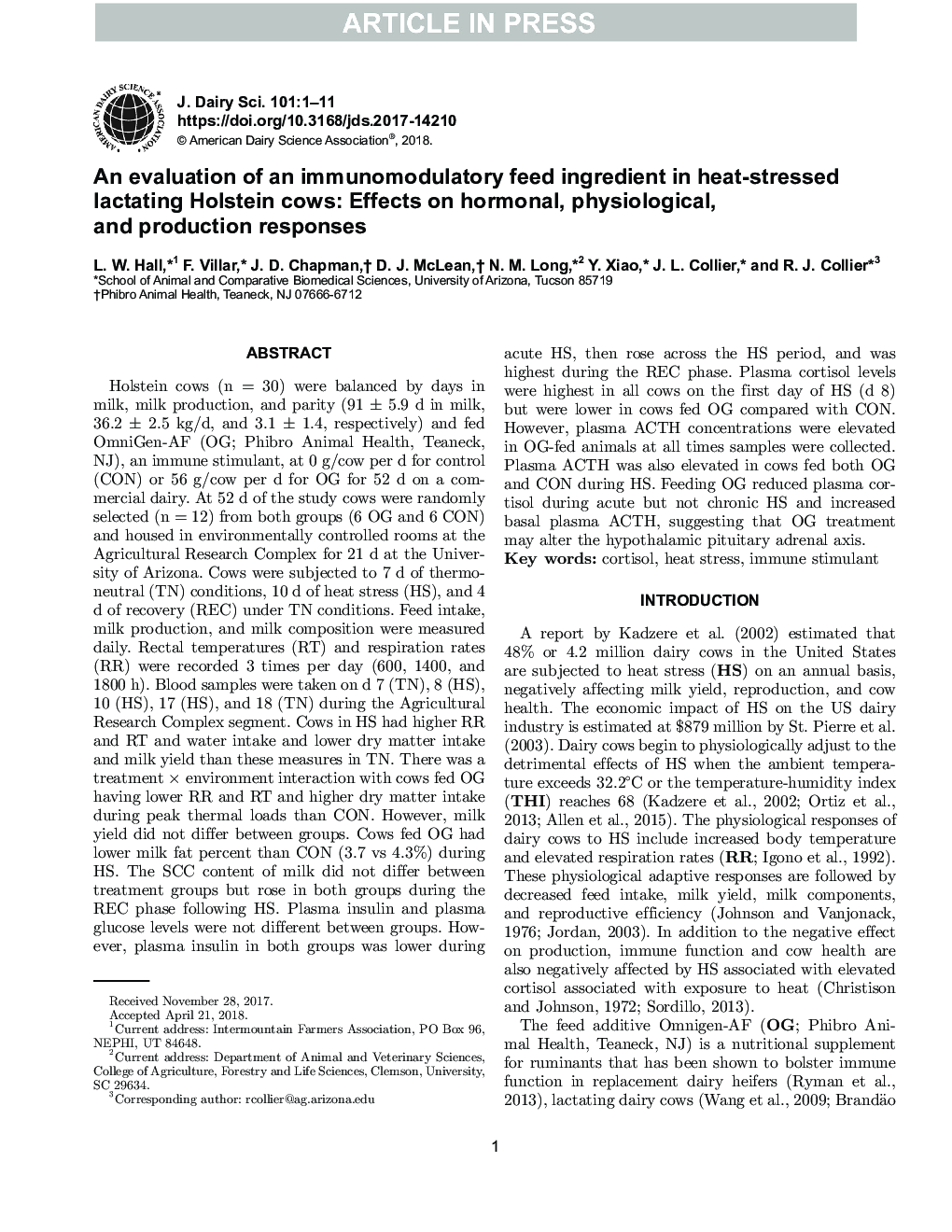| Article ID | Journal | Published Year | Pages | File Type |
|---|---|---|---|---|
| 8500882 | Journal of Dairy Science | 2018 | 11 Pages |
Abstract
Holstein cows (n = 30) were balanced by days in milk, milk production, and parity (91 ± 5.9 d in milk, 36.2 ± 2.5 kg/d, and 3.1 ± 1.4, respectively) and fed OmniGen-AF (OG; Phibro Animal Health, Teaneck, NJ), an immune stimulant, at 0 g/cow per d for control (CON) or 56 g/cow per d for OG for 52 d on a commercial dairy. At 52 d of the study cows were randomly selected (n = 12) from both groups (6 OG and 6 CON) and housed in environmentally controlled rooms at the Agricultural Research Complex for 21 d at the University of Arizona. Cows were subjected to 7 d of thermoneutral (TN) conditions, 10 d of heat stress (HS), and 4 d of recovery (REC) under TN conditions. Feed intake, milk production, and milk composition were measured daily. Rectal temperatures (RT) and respiration rates (RR) were recorded 3 times per day (600, 1400, and 1800 h). Blood samples were taken on d 7 (TN), 8 (HS), 10 (HS), 17 (HS), and 18 (TN) during the Agricultural Research Complex segment. Cows in HS had higher RR and RT and water intake and lower dry matter intake and milk yield than these measures in TN. There was a treatment à environment interaction with cows fed OG having lower RR and RT and higher dry matter intake during peak thermal loads than CON. However, milk yield did not differ between groups. Cows fed OG had lower milk fat percent than CON (3.7 vs 4.3%) during HS. The SCC content of milk did not differ between treatment groups but rose in both groups during the REC phase following HS. Plasma insulin and plasma glucose levels were not different between groups. However, plasma insulin in both groups was lower during acute HS, then rose across the HS period, and was highest during the REC phase. Plasma cortisol levels were highest in all cows on the first day of HS (d 8) but were lower in cows fed OG compared with CON. However, plasma ACTH concentrations were elevated in OG-fed animals at all times samples were collected. Plasma ACTH was also elevated in cows fed both OG and CON during HS. Feeding OG reduced plasma cortisol during acute but not chronic HS and increased basal plasma ACTH, suggesting that OG treatment may alter the hypothalamic pituitary adrenal axis.
Keywords
Related Topics
Life Sciences
Agricultural and Biological Sciences
Animal Science and Zoology
Authors
L.W. Hall, F. Villar, J.D. Chapman, D.J. McLean, N.M. Long, Y. Xiao, J.L. Collier, R.J. Collier,
